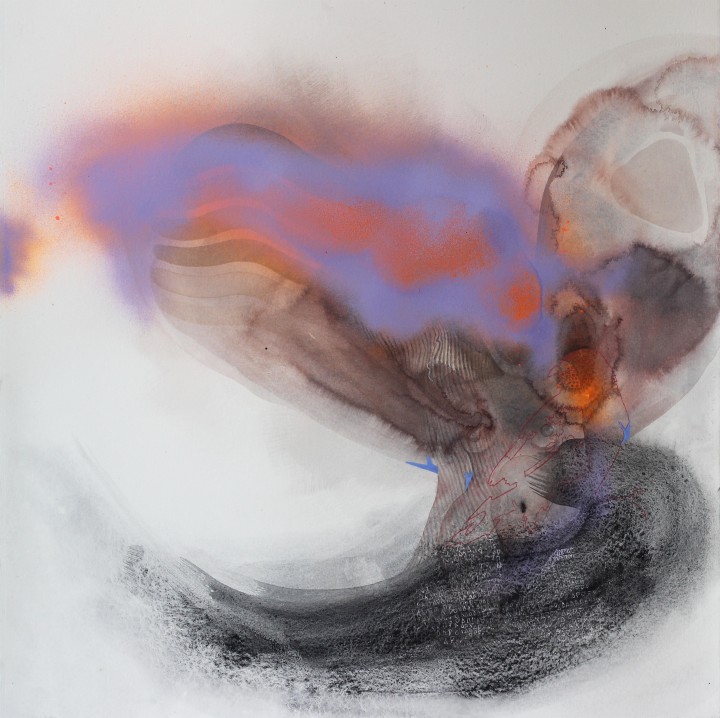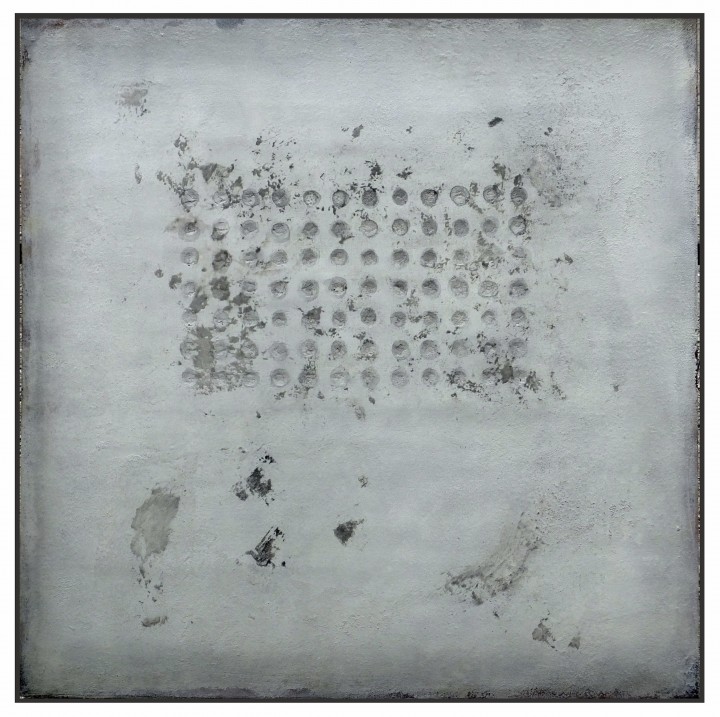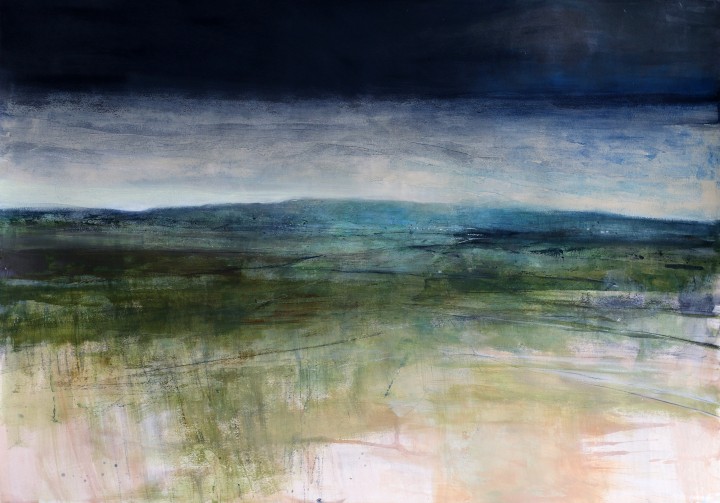Scottish Art News
Latest news
Magazine
News & Press
Publications
The new members of the Royal Scottish Society of Painters in Watercolour embracing the medium in innovative and exciting ways
By Susan Mansfield, 18.01.2024

The 143rd Open Annual Exhibition of the Royal Scottish Society of Painters in Watercolour (RSW), currently in the RSA Upper Galleries in Edinburgh, brings together the best of traditional watercolour with artists who are using water-based media in exciting and innovative ways. In the last two years, the Society has welcomed more than 20 new members who have embraced watercolour as a contemporary medium. Susan Mansfield shares with us five of them...
Gemma Petrie grew up on the Isle of Skye, and says she has always loved the natural world. Now living and working near Portmahomack in Easter Ross, she creates beguiling semi-abstract work suggestive of natural and biomorphic forms, colours and patterns.
She says: “Watercolour has always been the medium I turn to most. I add some mixed media to the pieces, but they nearly always start with watercolour. The fluidity, the mix of fast and slow methods, suits the way I work.”
Gemma graduated from Edinburgh College of Art in 2005 and is currently studying for a Masters in Contemporary Art and Archaeology from the University of the Highlands and Islands. She had her first solo exhibition in Browns Gallery in Inverness last year.
She describes her work for the RSW exhibition as “focussing on layers of place — the overlooked edges of our human world and the shifting boundaries between us and nature. Taking notice of what shares our space might help us reconnect to nature and care for the environment.”
 Kenneth Le Riche, Unscripted Composition With Horse. Image courtesy of the Artist and RSW
Kenneth Le Riche, Unscripted Composition With Horse. Image courtesy of the Artist and RSW
Forres-based Kenneth Le Riche describes his paintings as “invented psychological mindscapes”. Drawing on interests in anthropology, geometry and psychology, he enjoys creating uncanny, dystopian imagery which presents the ordinary in an unfamiliar way. His paintings often include a figure or animal, elements of architecture and games with perspective.
He says: “There are contradictions at play: humanity and the artificial, the banal and the extraordinary. Figures or animals find themselves in an uncompromising and bleak arena. Ladders, steps, arches, holes and other motifs punctuate the picture plane. There is stillness but it is deceptive, implying a precarious or fragile existence.”
Kenneth’s first degree was in engineering, and he went to Edinburgh College of Art in his thirties before going on to do an MFA at the New York Academy of Art. He says he enjoys water-based mixed media because “it frees me up”. “I find it more conducive to explore new ideas because of its sense of immediacy and unpredictability.”
 Dominique Cameron, Japanese Anemones. Image courtesy of the Artist and RSW
Dominique Cameron, Japanese Anemones. Image courtesy of the Artist and RSW
After joining the RSW just last year, Dominique Cameron won the Scottish Artists Benevolent Association Prize in this year’s exhibition for her painting ‘Japanese Anemones’. She says that “walking, landscape and story” are all equally central to her work, which uses elements of abstraction to “explore the poetics of space, form and colour”.
Dominique’s first degree was in photography and, “after a variety of jobs and parenting”, she studied for an MFA at Duncan of Jordanstone College of Art and Design, graduating in 2014 . She says: “My journey in art began with walking. As a child, and later as an adult, it has been a constant. I am interested in how we experience and navigate landscape through drawing, painting, conversation and text.”
She likes to create projects around specific places and is currently making a body of work about Methil Docks. She says: “Water-based media allows for an immediacy and improvisatory approach. As it’s fast- drying, it mean that decisions have to be made swiftly and intuitively. At times, that’s valuable, you can’t overthink the process.”
 Chris Brook, Thaw Linear Land. Image courtesy of the Artist and RSW
Chris Brook, Thaw Linear Land. Image courtesy of the Artist and RSW
Chris Brook has found water-based paint ideal for his brand of abstraction. He uses discarded materials to make works which are sculptural as well as painterly and described his preferred medium as “a combination of acrylic paint, gesso, tile adhesive and shellac”. “Being water-based, acrylic paint offers me the versatility of combining the paint with tile adhesive to create an impasto mix to make textures and glazes.”
Chris grew up in Sheffield and, apart from a foundation course, has no formal training in art. For some years, he ran his own business making poster art for reproduction but in the last ten years his painting practice has taken over. Based on a farm near the Borders village of St Abbs, he says he is often inspired by the landscapes and fields around him.
“I’m intrigued by the traces which offer an insight into the past, a tangible connection in both a historical and aesthetic sense, and our ability to extract information from the fragile remnants which remain.”
 Helen Glassford, Eastern Fringes. Image courtesy of The Artist and RSW
Helen Glassford, Eastern Fringes. Image courtesy of The Artist and RSW
Helen Glassford’s work has reached new audiences since her first solo exhibition at the Scottish Gallery in 2022, although she has been painting since she was a student at Duncan of Jordanstone College of Art and Design two decades ago. She co-founded the Tatha Gallery in Newport on Tay in 2013 and helped run it for eight years, stepping back in 2021 to devote more time to her own art.
She paints both in oil and water-based media and is drawn to remote, elemental landscape. She says: “Landscape is my muse. Remote, raw and untainted landscapes ignite the hand and imagination. I’m constantly and daily intrigued by the things I see, the cause and effect of the wind and the sheer cliff, the atmosphere of peat hags, the texture of lichen, twisted birches, frosted lochans, sweeping shorelines.
“My first love of paint and its infinite possibilities started at art college where I spent a whole term learning how to make watercolours with pure pigment, gum arabic and glycerin. I now bounce between oil-based and water-based media to keep my practice moving forward and energised.”
The 143rd Open Annual Exhibition of the RSW runs until 6th February 2024, for more information visit www.rsw.org.uk




